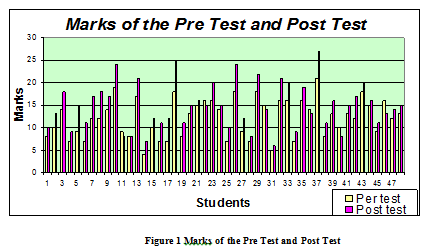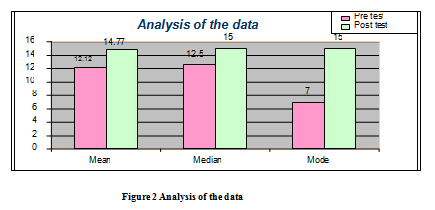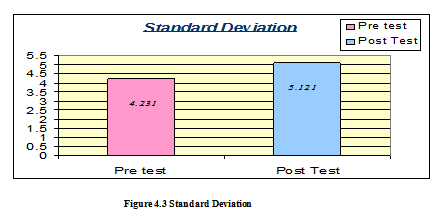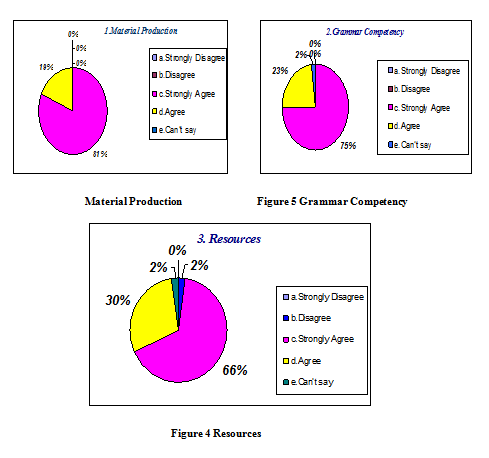ELTWeekly Vol. 4 Issue#17 | April 23, 2012 | ISSN 0975-3036
This paper is submitted by Dr. Jagdish S. Joshi, Associate Professor, UGC-ASC, Gujarat University, Ahmedabad, Ms. Nita D. Parmar, Ph.D. Research Scholar, Kadi Sarva Vishwavidyalaya, Gandhinagar and Mehul N Rana, M.Phil. Research Scholar, Kadi Sarva Vishwavidyalaya, Gandhinagar.
Key Words: CALL, ELT, Innovation in teaching, Impact of CALL, Experimental Study
Introduction
Many studies have been done to assess the impact of Computer Assisted Language Learning (CALL) on learning mainly on the development of four skills such as speaking, listening, writing and reading or on motivation. Concerning grammar teaching of language, some studies find a significant advantage of this tool, while some studies find no significant difference between CALL and other teaching methods.
For instance, a positive impact of CALL has been found by Nutta investigating the effect of computer-based vs. teacher directed instruction on the acquisition of English as a second language. In this study, computer-based students reached better scores than teacher-directed students, leading the author to conclude that computer-based instruction can be an effective method of teaching L2 grammar.
Similarly, Nagata investigated the efficiency of intelligent CALL on the acquisition of Japanese postpositions by English-speaking students. In this investigation, one group of students was assigned to the Computer Assisted Language Instruction (CALI) condition and the other group took the workbook instruction condition. The experimental group obtained better scores in production than in comprehension. In addition, the students in theCALIgroup had significantly better attitudes towards their instruction than the students in the workbook group.
Other studies are less optimistic. Like Liou, Wang and Hung-Yeh compared two groups of Chinese speaking students learning English in two different learning conditions: one experimental group attended a ten-week CALL course while the control group was taught the same content in a traditional method. This investigation was concluded through evaluating the questionnaire, that the combination of classroom instruction and grammatical CALL might be helpful, “or at least not detrimental”. But their survey does not demonstrate that CALL plus instruction would be more efficient than instructions plus homework. Several studies have shown a detrimental effect of simultaneous presentation of spoken and written material, especially in foreign language learners like in studies of Diao and Sweller.
The present study aims to fine the impact of CALL materials in teaching English grammar at higher secondary school taking into consideration the level of grammar competency of the learners. It predicts that less proficient learners will improve more using a CALL rather than tradition materials.
Method
Participants
The investigator used the students ofD.V.PatelHigh School[Gujarati Medium School], Ashi for the investigation. The vision of the school includes providing education to students from rural areas. The language competence of these students is significantly low level or nearer to A1 level. Forty eight students of class XII are selected as the sample group for the experiment of this school. It is extremely necessary to prepare and try out materials to help the learners to come up to the level of the expectations as they are going to appear in board exam. Hence the investigator intends to prepare some materials, which would help such students to develop the required grammar competence.
Research Methodology
- Pre test
Pre test is conducted. The level related to the problem of the sample group is measured in the test. Five problems containing ten sentences each based on six different grammar parameters of English language are tested.
- Data of the pre test
Data of the pre test is interpreted for the treatment related to the research study. This data also helps in the selection of CALL materials according to their level.
- Selection CALL materials
After the data interpretation of the pre test, adequate CALL material is selected and modified or prepared for the teaching of English grammar to the sample group. The CALL material includes: power point presentation including audio – video clips, pictures, animated pictures etc. and exercises prepared with hot potato.
- Interest of the students
The interest of the students is kept in mind while selecting the CALL materials.
- Try out of the CALL materials
CALL material is tried out on the sample group by using LCD projector and computer lab.
- Post test
Post test is conducted. The sample group has taken the test, after the treatment to measure the impact of CALL materials in teaching English grammar. The score of the post test and the pre test are compared. The score of the post teat was found better than the pre test. This means that the treatment impact is positive.
- Questionnaire
At the end, Questionnaire has been given to get the feed back related to improvement in their grammar competency, materials production and resources.
- Analysis and interpretation
Statistical analysis and interpretation has been done on the bases of the data collected through pre test and post test. Highlights of the analysis given below:
Highlights of the Analysis
- The average score of the pretest is12.12 and in the post test 14.77.
- There is a difference of 2.65 between the pre test score and post test score which is positive.
- Mode of the score is positive increase of +8, where as Median is positive increase of +2.50. ( Mode: pre test=7, post test=15, Median: pre test =12.50 and post test=15.00)
- There is a high standard deviation (5.121) in posttest score compared with low standard deviation (4.231) in pretest score.
Graphical overview of the data analysis:
Figure 1 Marks of the Pre Test and Post Test
Figure 2 Analysis of the data
Figure 4.3 Standard Deviation
Interpretation of questionnaire
The researcher has tried to asses the sections covered in the try out by dividing questions of the questionnaire in three different categories. These are as follow:
1) Material Production
2) Grammar Competency
3) Resources
The responses are obtained in the following manner:
a. Strongly Disagree
b. Disagree
c. Strongly Agree
d.Agree
e. Can’t say
In the first category, i.e., material production 81% students strongly agreed and 19% students agreed. In the second category grammar competency 75% students strongly agreed and 23% students agreed and 2% students responded as ‘can’t say’. In the third category resources 66% students strongly agreed, 30% students agreed, 2% students disagreed, and 2% students responded ‘can’t say’. Thus the qualitative interpretation of the data of the questionnaire says the use of CALL material in teaching English grammar is accepted and appreciated, even it can get better results. The charts of the above data are as follow:
Conclusion
The results of the pre-test and post test and the data generated through questionnaire about the CALL material shows that these materials are more effective than paper, pen and blackboard. The level of grammatical competencies of the sample group taught through CALL materials has been found significantly better through findings obtained from statistical calculations than the other group taught through traditional method. Through this study it can be concluded that the CALL material is effective and useful to learners in interestingly, clearly and easily learning grammatical concepts.
Work Cited
Bartz A. E. Basic Statistical Concepts and the Behavioral Sciences. Minnepolis: Burgess. 1981.
Bohrnstedt, G.W. and Knoke, K. Statistics for Social Data Analysis.Itasca,IL: Peacock. 1982.
Borg, W.R. and Gall, M.D. Educational Research: An Introduction. New York, Longman.1983.
Chauhan, K. “Enhancing Teaching and Learning through CALL”. ELT News.Vol.5 No.4. December 2006; 27-28.
Chenu,Florence, et.al., “Is Computer Assisted Language Learning (CALL) efficient for grammar learning? An experimental study in French as a second language” The JALT CALL Journal, Vol. 3, No. 3, (2007): 85-93
Garrett, N.. “Computers in foreign language education: Teaching, learning and language acquisition research”. ADFL Bulletin, 19(3) ,1988; 6-12.
Kenning,M.J .and Kenning,M.M. An Introduction to Computer Assisted Language Teaching.OxfordUniversity Press. 1983.
Liou, H.C, Wang, S.H., & Hung-Yeh, Y. “Can grammatical CALL help EFL writing instruction?” CALICO Journal, 10(1), (1992): 23-44.
Nagata, N. “Computer vs. workbook instruction in second language acquisition.” CALICO Journal, 14(1), (1996): 53-75.
Nutta, J. “Is computer-based grammar instruction as effective as teacher-directed grammar instruction for teaching L2 structures?” CALICO Journal, 16(1), (1998): 49-62.
Patel Bhavika. “ICT Integrated Teacher Training Programme: A Impact Study.” Diss. S.P.University, Vallabh Vidyanagar. 2006.
Patel Prashant N. “Impact of Technology Integrated Project Based Learning on Students at the Higher Secondary Level (Second Language).” Diss. S.P.University, Vallabh Vidyanagar. 2005.
Skinner, B., & Austin, R. “Computer conferencing: Does it motive EFL students?” ELT Journal, Vol 53 no4, (1999): 270-277.
Srinivas, R. ‘CALL.’ ELT News. Vol. 4 No.1. .March, 2005; 37-41.





A good research paper.I like it very much.congrats to all the writers of this paper.